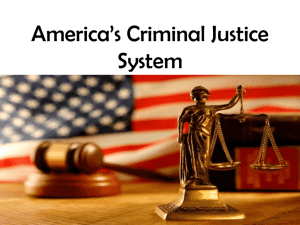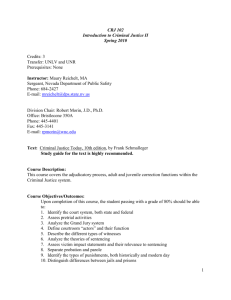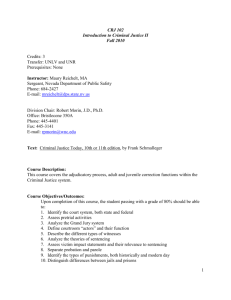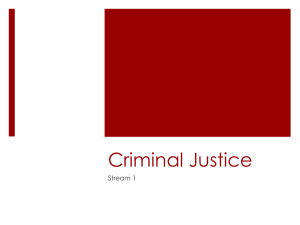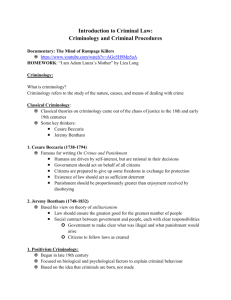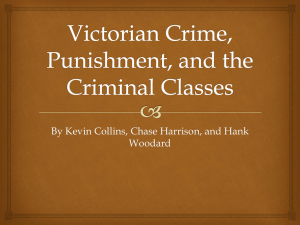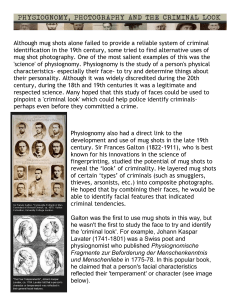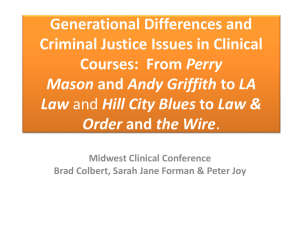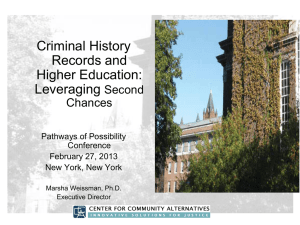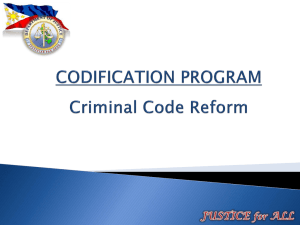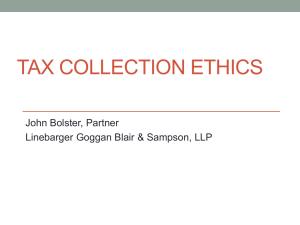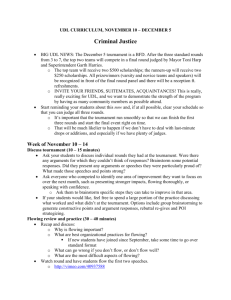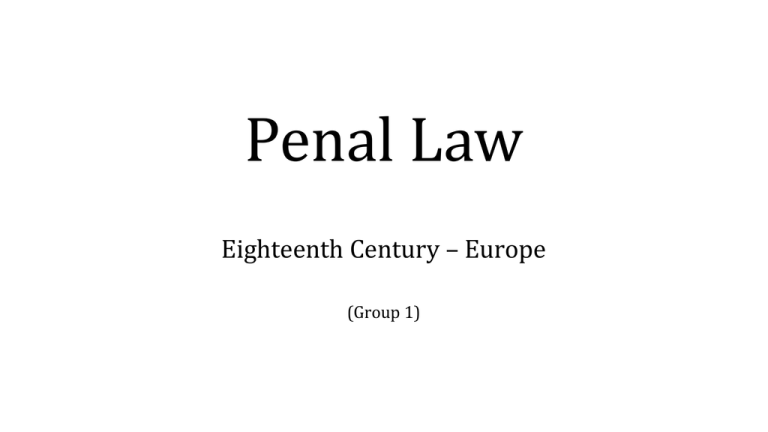
Penal Law
Eighteenth Century – Europe
(Group 1)
The Enlightenment
• Natural law and rationalist thinking the Enlightenment
• Legal philosophy
• Codifications and reforms
• Absolute monarchies. Obsolete criminal law. Corrupt courts.
Brutal punishments.
• A good penal law is…
•
•
•
•
•
•
Easy to access and understand
Predictable
Rational and efficent
Treating people equal
Proportional (crimes-punishments)
Protecting the rights of the citizen
French Declaration of Rights (1789).
• No retroactive punishments.
• A crime must protect individual or society.
• Why shall society punish criminals?
• General preventive perspective
• What sort of punishments should be used?
• Prisons instead of corporal punishments, public humiliation and death
penalty.
Who was Cesare Beccaria?
• Cesare Bonesana, Marquis de Beccaria
• 1738- 1794
• Aristocrat
and
Milan
• The Verri brothers
philosopher
from
What did he publish?
• Dei delitti e delle pene (Of crime and punishment), 1764
One of the most influential essays on criminal law of all time
A systematic analysis of the judicial system
Created a catalog of legal principles on criminal law
What did he do?
• Extensive critique of the criminal system
”The greatest happiness for the greatest number of people” - Utilarian
The Social Contract
Death penalty and torture
Crime prevention
Efficiency of punishment – proportionate to crime
The arbitrariness in interpretation of law
What was his influence on the 19th century?
• Immediate effect on the criminal law of his time
• Acknowledged by other philosophers; Voltaire, Filangieri and Bentham
• Benjamin Franklin and Thomas Jefferson
• Influenced monarchs
Catherine II of Russia
Joseph II of Austria
Frederick the Great of Prussia
Gustaf III of Sweden
Louis XVI / The Declaration of the Rights of Man
• Still relevant?
Who was John Howard?
(1726 - 1790)
• Philanthropist, social reformer
• The opposite of a
philosopher/intellectual
• A realist – more concerned with people,
rather than ideas
• Willing to go against public opinion and
established ways of doing things
What did he do?
1773: becomes Sheriff of Bedfordshire
Eye-opener: enabled the English people to see the inside of their prisons
He sought to find the best methods of treating plague
He persuaded the House of Commons to enact two parliamentary acts
(1774): one abolished the jailers’ fees, the other improved the prisoner’s
health
• Dedicated his late maturity and fortune to the prison investigation, making a
tour of the European and Russian prisons (1775 onwards)
• Advocated for clean, healthy accommodation with the provision of adequate
clothing and linen; separation of prisoners according to sex, age and nature of
offence; proper healthcare
• He introduced the notion of labour in prison in order to combat the sin of
idleness
•
•
•
•
What did he publish?
• ‘The State Of The Prisons In England And Wales: With Preliminary Observations,
And An Account Of Some Foreign Prisons And Hospitals’ 1777
Plain, straightforward, contains no philosophy, aimed at the general public
Powerful writing: received general acceptance because of its genuineness: an
accumulation of facts and personal observations
• ‘An Account of the Principal Lazarettos in Europe’ 1789
Contains personal observations and depressing descriptions following his visits to pest
houses.
What was his influence on the 19th
century?
• He shaped the public opinion
• His work led to the initiation of new criminological and clinical
research
• He inspired the development of prisoners’ aid societies around the
world, most of them bearing his name
• Although his recommendations were simple and effective they
were not implemented before late nineteenth century
• ‘I do not regret the loss of many conveniences of life but bless God
who has inclined my mind to such a scheme’ 1785
Who was Gaetano Filangieri?
• Born in 1753, died in 1788
• Educated man
• Realized laws mold and govern society and started
studying and comparing laws of different times and
countries
• Good legislation was the key to human happiness
What did he publish?
• Published among others:
• Il Museo Artistico-Industriale in Napoli: Relazione di Gaetano
Filangieri Principe di Satriano con una ministeriale e lo statuto
• Di una testa di cavallo in bronzo già di casa Maddaloni in Via Sedile
di Nilo ora al Museo Nazionale di Napoli
• Mastro Giovanni Normando agonista ed architetto
What did he do?
• Scienza della legislazione, consists of seven books
• Criminal laws in book three
• Procedural law: in favour of the English system
• Substantive law: problems of crimes and punishments
What is his influence on the 19th century?
• The French Revolution was led by his ideas
• Huge reduction of capital punishment in Western Europe
• Transportation of criminals to underpopulated colonies
Conclusion
• A new wave of legislation in Europe. Considerable changes in the
criminal law. Enligthened monarchs.
• Howard: Influenced the prisons of the 19th century.
• Beccaria: Influenced criminal law in general, wrote one of the most
influental essays on criminal law of all time.
• Filangieri: Transportation of criminals to penal colonies, reduction
of death penalties in Europe.

